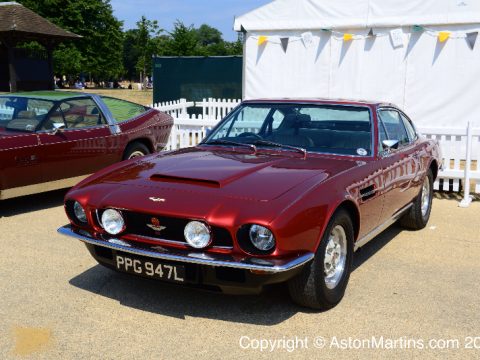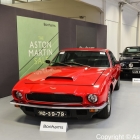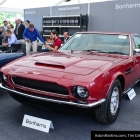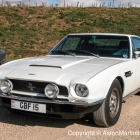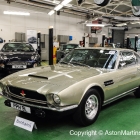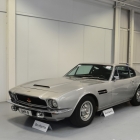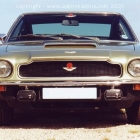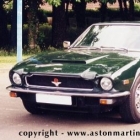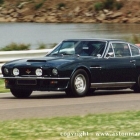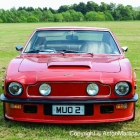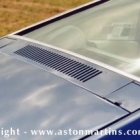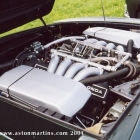The AMOC once designated the Bosch f.i V8’s as Series 2, but recently this description has been quietly dropped as it was never used by the factory. The production run of only 288 examples were made between April 1972 and July 1973. AM V8’s built after this time used Weber carburettors and feature larger bonnet scoops.
The V8 engine retained the Bosch fuel injection system from the DBS V8 which accounts for the sophisticated plumbing evident in this photograph. Power output from this engine was quoted as 310-320 bhp with 360 lb/ft of torque. Initially the Bosch mechanical fuel injection was found to be troublesome which has lowered the desirability of the DBSV8 and V8 series 2. This is a pity as the fuel injected cars are the most powerful of the standard V8’s, only eclipsed by the later V8 Vantage; top speed of around 160 mph and zero to 60 mph in under 6 seconds with manual transmission.
Almost all were built for the British market with right hand drive. Left hand drive cars for export are very rare and are often fitted with the less powerful /EE emission control engines. Non at all were sold in the USA as they did not conform to the increasingly strict smog controls.
For easy recognition of the Bosch f.i. cars, the air intake on the bonnet is open and lower in height than the later cars which were fitted with Weber carburettors. Also the panel below the rear window has horizontal louvers cut in to it – later cars have a flat panel with a small rear lip. Cars which feature additional Cibie driving lamps and Vantage style air dams and flip-tails are a non-standard modifications added sometimes many years after the cars were first built.
Something of note – the earliest examples of AMV8’s were fitted with badges with the words ‘David Brown’ and ‘DBS V8’. These were only fitted to use up the badges supply and are were not actually built under Sir David Brown’s ownership of AML Despite the badging, they are not actually DBS V8s at all. Also the Japanese market cars retained the ‘DBSV8’ prefix to the chassis number to ease importation. These cars are not DBS V8 either as Aston Martin was not licenced to use the initials, ‘DB’, which were owned by the David Brown Corporation.



